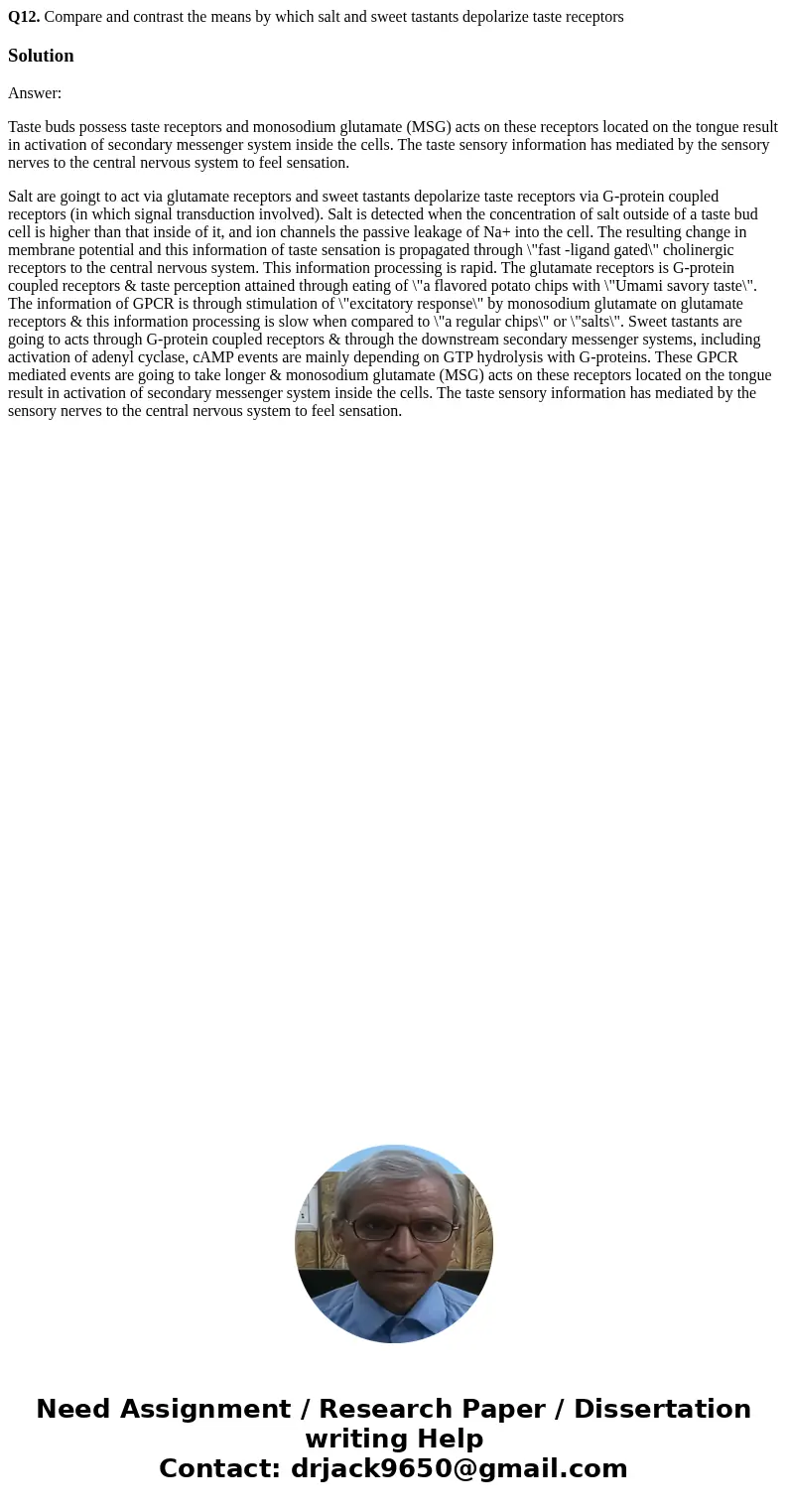Q12 Compare and contrast the means by which salt and sweet t
Q12. Compare and contrast the means by which salt and sweet tastants depolarize taste receptors
Solution
Answer:
Taste buds possess taste receptors and monosodium glutamate (MSG) acts on these receptors located on the tongue result in activation of secondary messenger system inside the cells. The taste sensory information has mediated by the sensory nerves to the central nervous system to feel sensation.
Salt are goingt to act via glutamate receptors and sweet tastants depolarize taste receptors via G-protein coupled receptors (in which signal transduction involved). Salt is detected when the concentration of salt outside of a taste bud cell is higher than that inside of it, and ion channels the passive leakage of Na+ into the cell. The resulting change in membrane potential and this information of taste sensation is propagated through \"fast -ligand gated\" cholinergic receptors to the central nervous system. This information processing is rapid. The glutamate receptors is G-protein coupled receptors & taste perception attained through eating of \"a flavored potato chips with \"Umami savory taste\". The information of GPCR is through stimulation of \"excitatory response\" by monosodium glutamate on glutamate receptors & this information processing is slow when compared to \"a regular chips\" or \"salts\". Sweet tastants are going to acts through G-protein coupled receptors & through the downstream secondary messenger systems, including activation of adenyl cyclase, cAMP events are mainly depending on GTP hydrolysis with G-proteins. These GPCR mediated events are going to take longer & monosodium glutamate (MSG) acts on these receptors located on the tongue result in activation of secondary messenger system inside the cells. The taste sensory information has mediated by the sensory nerves to the central nervous system to feel sensation.

 Homework Sourse
Homework Sourse